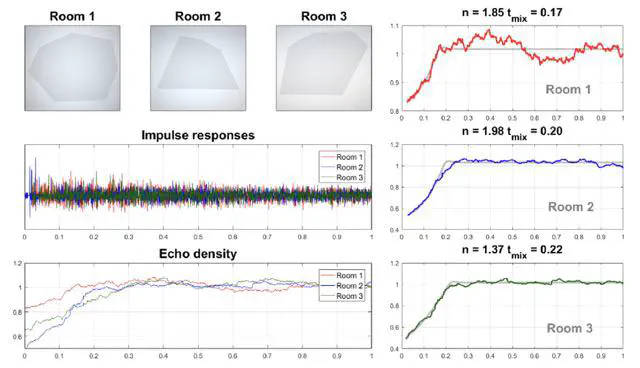Echo Density and Mixing Time Measures
 Figure by Tukuljac et al.
Figure by Tukuljac et al.Reverberation in rooms is often thought to evolve towards Gaussian noise gradually. This transition from distinct early reflection to dense late reverberation is a critical metric for characterizing the sound of a room. Various ad-hoc measures have been proposed to quantify these transitions. This work aims to use classic statistical normality tests and energy compensation techniques to evaluate robust approaches for echo density measures.
Related Work
[1] Abel, J. S. & Huang, P. P. A Simple, Robust Measure of Reverberation Echo Density. in 1–10 (2006).
[2] Tukuljac, H. P. et al. A Sparsity Measure for Echo Density Growth in General Environments. in vol. 00 1–5 (2019).
[3] Stewart, R. & Sandler, M. Statistical measures of early reflections of room impulse responses. in 59–62 (2007).
[4] Lindau, A., Kosanke, L. & Weinzierl, S. Perceptual Evaluation of Model- and Signal-Based Predictors of the Mixing Time in Binaural Room Impulse Responses. J. Audio Eng. Soc. 60, 887–898 (2012).
[5] Steinskog, D. J., Tjøstheim, D. B. & Kvamstø, N. G. A Cautionary Note on the Use of the Kolmogorov–Smirnov Test for Normality. Mon Weather Rev 135, 1151–1157 (2007).